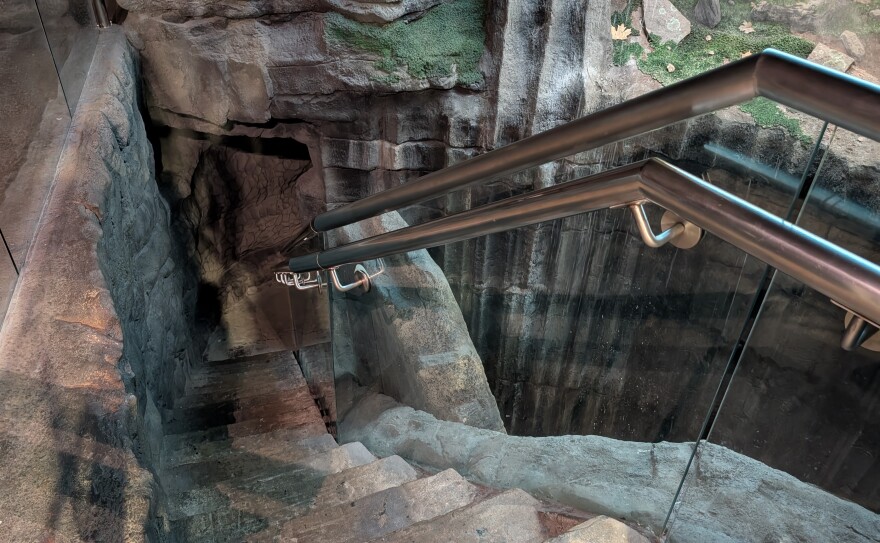You are curious. You like to learn things. Sometimes, its tough to find an answer. That's where our feature OKI Wanna Know comes in, solving little mysteries and uncovering minor secrets. This week, we go back underground with WVXU's Bill Rinehart.
Ashley Fitzpatric of Evendale says when she was young, she'd visit the Cincinnati Museum of Natural History.
"And we would go down inside this cave, step by step, down, down, down. It was the culmination of every field trip," she says. "And I wanna know: Is the cave still there? Was it real? Did they fill it in and build WCPO on top of it? Did they move it? How do you move a cave? I wanna know what happened!"
WCPO Channel 9's studios are on Gilbert Avenue at Elsinore now. General Manager Jeff Brogan says the station used to be at 5th and Central Avenue.
"The city (of Cincinnati) approached us back in 2002, 2003, and asked if we would be willing to move, because they wanted to expand the convention center," he says. "And so they worked with Scripps, our company, to figure out a site, and ultimately landed on this site."
Gilbert and Elsinore is where the Cincinnati Natural History Museum used to be. There was a planetarium, four giant sculptures of mammoths out front, and in the basement, a replica of a cave system. It was said to be the largest in the world.
By 1990, the Natural History Museum became part of the .
That complex has a cave system, just like the old one did.
"This one is... this is bigger, I would say. I'm not real familiar with the old one because I did not live in Cincinnati when it was that time, but I would say it's pretty close to twice as big."
Exhibits artist David Might says when the museum left Gilbert Avenue, the cave was left behind.
"The only thing that was kept and brought over from the old cave was some of the formations that were made for it, that could be removed and re-installed."
Might says some of the smaller, more detailed, easier-to-carry pieces were transported.
"Things like soda straws — they look like straws that hang from the ceiling, and they drip water, and they're just a formation," he says. "There's of course stalactites and stalagmites. We used resin to create the look that they had with the mineral content that was on them."
Might says most of the new cave system is made of concrete, based on real caves in Kentucky. John Agnew and Tim Jeckering designed the system and built it with a company from Wisconsin.
"They actually that were then cast in concrete, assembled as panels," he says. "The seams were sculpted with concrete to join them together so you couldn't see the different panels."

Might says after opening the two-floor replica, the museum had to adjust the experience. It was too dark and chilly for some people.
"There is HVAC that's in there ... I know initially it was to keep it at 55 degrees. I think that might be warmer now, I think there was some complaints from some visitors that it was too cold."
He says they've tried to make it as realistic as possible without making it too uncomfortable.
"Initially, when we opened it up in the early '90s, we had somebody come up with a cave scent that we could put in infusers and disperse throughout the museum," he says. "It's kind of a mildew-y, moldy smell."
The smell in the basement of WCPO is probably not like that. Jeff Brogan says a lot has changed since .
"The old Natural History Museum was knocked down to build this new facility. And we moved in this facility in 2004," he says. "What's in the basement is a parking garage. There's a parking garage and some storage. We do not have a cave. We do not have a waterfall."
Brogan says for a while, they did have a number of people showing up, thinking the museum was still there. He says this isn't the first time this question has come up.
"It's been a while since someone's asked, but I can confirm, there is not a cave. Just a basement and a parking garage."
Read more:




